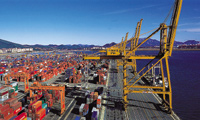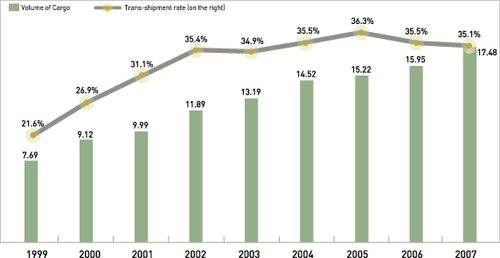Incheon International Airport, opened in March 2001, is equipped with state-of-the-art facilities and provides advanced traffic networks for its customers. With its strategic location, the new airport is poised to become a leading logistics and transportation hub in Northeast Asia. Expansion plans for the airport area include establishing a Free Trade Zone, International Business District and Special Economic Zone.

Gwangyang Port, a logistics hub for Northeast Asia in southwest Korea
Incheon International Airport has seen a continuous increase in the volume of cargo since its opening in March 2001. In 2006, it handled 2.34 million tons of international air cargo, becoming the second leading airport in the world in terms of air cargo volume.
Container ships from Korea ply international sea lanes to ports in South and North America, Europe, Australia, the Middle East and Africa. Foreign ocean liners, cruise ships and passenger-carrying freighters also pay frequent visits to Korean ports.
Port cargo volume also climbed steadily, from 11.89 million twenty-foot equivalent units (TEU) in 2002 to 17.48 million TEU in 2007, with the expansion of port facilities and increased productivity through improved cargo handling capabilities at Busan New Port, Gwangyang Port and Incheon Port.
* Port Cargo Volume and Transshipment Rate [Unit: million tons]

* Source: Ministry of Land Transport and Maritime Affairs
In particular, Busan Port handled 12.04 million TEU in 2006, ranking fifth in the world for three consecutive years in terms of volume of containers handled.